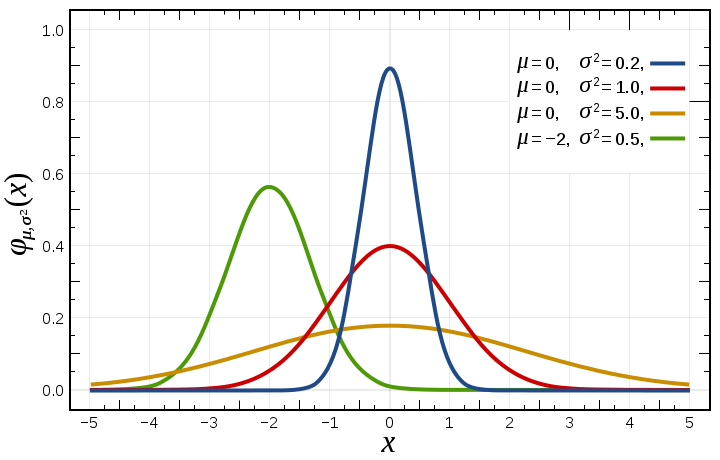Since we now have a model, however mediocre it may be, of tier one battles, let's extending it to add in tier two tanks. This shouldn't be too hard, tier one and tier two tanks fight each other a lot, so I went ahead and pulled a data-set of all battles featuring exclusively tier 1 and 2 tanks. That, by the way, is over 8000 battles
The first thing to look at is the Match Maker. First let's look at the distribution of numbers of tier 1s and 2s:
 |
| It's symmetric, which means I didn't mess up this time |
So, that's interesting, but what about the distribution of battles that Tier 1 tanks get? Let's count the number of Tier 2 tanks and see what we find:
 |
| I have more charts where that came from! |
Another interesting item I found, which at first confused me, is that Tier 2 Artillery can get into battles where all the tanks are Tier 2. In all 1308 battles where there are only tier 2 tanks present, this happened only 4 times. The obvious answer is that these are actually battle tier 3 battles which happen to be missing tier 3 tanks, but the amusing part is that it can happen.
To continue on down the road, I'm going to use the tier one model we put together last post to get a first look and see how well it matches our data. If you don't remember, this is what that model looked like:
| Tank | Odds Ratio |
|---|---|
| Leichttraktor |
1.0239
|
| T1 Cunningham | 1 |
| MS-1 | 0.9495 |
| Renault NC-31 | 0.9181 |
| Renault FT-17 | 0.9096 |
| Vickers Med. Mk. 1 | 0.8563 |
Unsurprisingly, this model doesn't perform all that great on the new data, even when limited to battles that include Tier 1s, only correctly predicting 52.2% of the the outcomes, compared to 51.6% for just choosing side 1. So, obviously, it's back to the drawing board to come with a new model, one that takes into account the new data. The model I'm going to try is going just contain the non-premium tanks, so we won't need a baseline.
Quick check to see if this makes any sense and... Hmmmm. The worst tank, by a long shot, is the Med Mk. II, a tier 2! I suppose that's not unsurprising, we've previously said that British low tiers suck. The fact that the Mk. II is actually 3% worse from the Mk. I is also highly amusing. Worse, the bottom three tanks are all British.
At the other end of the spectrum, the obvious is made evident, the 'derp' T18 dominating the low tier battles, followed by the venerable Pz. II. The difference though is quite immense,
The three 'classic' Tier 1 tanks also place higher than quite a number of tier 2 tanks. The LoLTraktor once again tops the list with the T1 and MS-1 close behind, likely due to the number of experienced players running them for fun and credits. In fact, some of the T18's power may derive from similar sources, though the 75mm seems to be the main cause.
But naturally, if we can't predict much, this isn't worth much. So, of the 8453 battles, it's important to note that this model only predicts 4658 of them, just 55.1%. The null model, just guessing a Side 1 Win, can predict 51.8%. That's an improvement sure, but not much.
 |
| At least the Trend is in the right direction |
Obviously, we're showing that the choice of tank is not the biggest factor in whether a team wins. Personally, I expect we could get a lot of extra predictive power from knowing how many battles players have. It's likely that the experience of playing for a long period of time allows you to do much better against the 'noobs'. While I can't exactly vouch for a skill-based match-maker, I think that this is a perfectly good time to suggest that players with less than, say, five-hundred or a thousand battles be segregated into their own matchmaking pool for their own protection and enjoyment of the game. At least for the first couple of tiers.
For the next post I'm going to add in the low tier premiums to see if we can improve our predictive powers. Hopefully this time it won't be a week and a half between posts. After that I am going to try to tackle high tier tanks, since those are what people actually care about. By then 8.4 will likely be out and my data will be woefully out of date, so we'll go forward with obtaining more data and taking a look at how that huge 183 changed the meta game.
For the next post I'm going to add in the low tier premiums to see if we can improve our predictive powers. Hopefully this time it won't be a week and a half between posts. After that I am going to try to tackle high tier tanks, since those are what people actually care about. By then 8.4 will likely be out and my data will be woefully out of date, so we'll go forward with obtaining more data and taking a look at how that huge 183 changed the meta game.
As always, if you enjoyed this post, please help us in our data gathering efforts. It's simple, it's easy and you can find out how just by clicking here.








